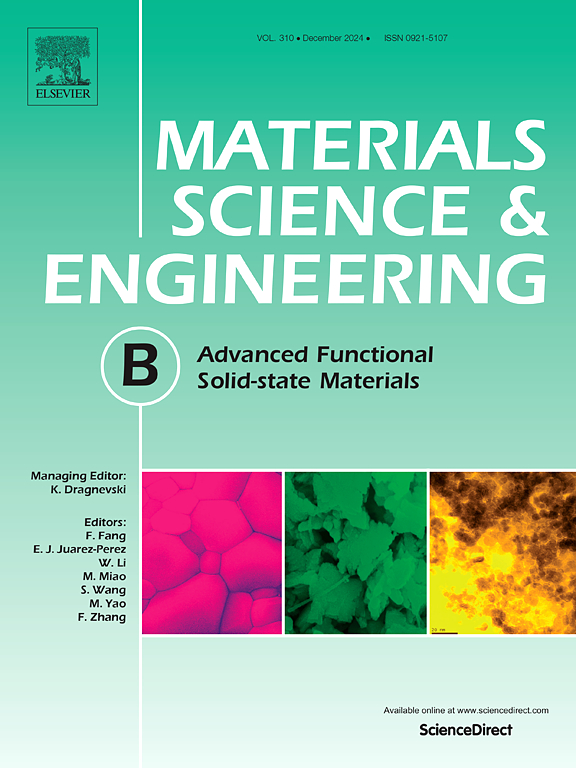First-principles discovery of half-metallicity in lead-free CsBCl3(B = Ti, V, Cr) halide perovskites for spintronic and spin-dependent applications
IF 4.6
3区 材料科学
Q2 MATERIALS SCIENCE, MULTIDISCIPLINARY
引用次数: 0
Abstract
We employ density functional theory (DFT) combined with Monte Carlo simulations to investigate the structural, electronic, magnetic, and mechanical properties of lead-free halide perovskites CsBCl (B = Ti, V, Cr). Our findings reveal that CsTiCl and CsCrCl exhibit half-metallic ferromagnetism with wide spin-down band gaps and 100% spin polarization, making them promising candidates for spintronic applications. In contrast, CsVCl stabilizes in an antiferromagnetic semiconducting ground state with a band gap of 3.03 eV (GGA+U), indicating potential for optoelectronic use. By mapping exchange interactions from first-principles onto a classical Heisenberg model and performing Monte Carlo simulations, we estimate Curie temperatures of approximately 200 K and 240 K for CsTiCl and CsCrCl, respectively, confirming their finite-temperature magnetic stability. Among them, CsCrCl exhibits the strongest magnetic exchange, highest , and notable mechanical resilience (bulk modulus = 34.51 GPa, Pugh’s ratio = 1.76), underscoring its suitability for moderate-temperature spintronic applications. Phonon dispersion analyses confirm the dynamical stability of all three compounds in their cubic phase.
无铅CsBCl3(B = Ti, V, Cr)卤化物钙钛矿中半金属丰度的第一性原理发现,用于自旋电子和自旋相关应用
我们采用密度泛函理论(DFT)结合蒙特卡罗模拟研究了无铅卤化物钙钛矿CsBCl3 (B = Ti, V, Cr)的结构、电子、磁性和力学性能。研究结果表明,CsTiCl3和csccl3具有半金属铁磁性,具有宽的自旋下带隙和100%的自旋极化,使其成为自旋电子应用的有希望的候选材料。相比之下,CsVCl3稳定在反铁磁半导体基态,带隙为3.03 eV (GGA+U),表明具有光电应用潜力。通过将交换相互作用从第一原理映射到经典海森堡模型并进行蒙特卡罗模拟,我们估计CsTiCl3和csccl3的居里温度分别约为200 K和240 K,证实了它们的有限温度磁稳定性。其中,csccl3表现出最强的磁交换、最高的TC和显著的机械回弹性(体积模量= 34.51 GPa, Pugh’s比值= 1.76),适合中温自旋电子应用。声子色散分析证实了这三种化合物在其立方相中的动力学稳定性。
本文章由计算机程序翻译,如有差异,请以英文原文为准。
求助全文
约1分钟内获得全文
求助全文
来源期刊

Materials Science and Engineering: B
工程技术-材料科学:综合
CiteScore
5.60
自引率
2.80%
发文量
481
审稿时长
3.5 months
期刊介绍:
The journal provides an international medium for the publication of theoretical and experimental studies and reviews related to the electronic, electrochemical, ionic, magnetic, optical, and biosensing properties of solid state materials in bulk, thin film and particulate forms. Papers dealing with synthesis, processing, characterization, structure, physical properties and computational aspects of nano-crystalline, crystalline, amorphous and glassy forms of ceramics, semiconductors, layered insertion compounds, low-dimensional compounds and systems, fast-ion conductors, polymers and dielectrics are viewed as suitable for publication. Articles focused on nano-structured aspects of these advanced solid-state materials will also be considered suitable.
 求助内容:
求助内容: 应助结果提醒方式:
应助结果提醒方式:


